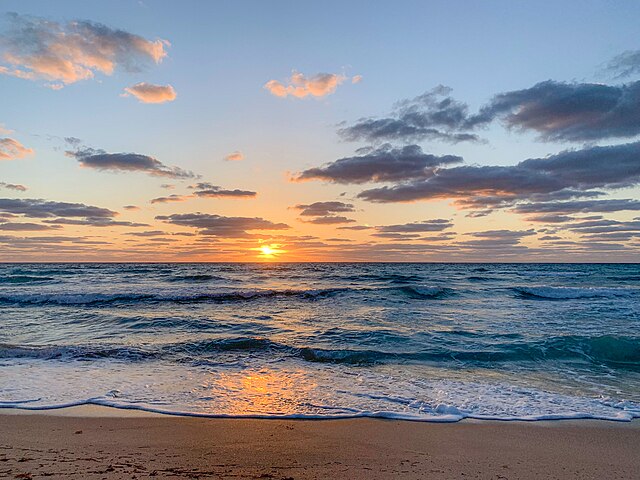
by DGR News Service | Sep 6, 2024 | ANALYSIS, The Problem: Civilization
Editor’s note: Protecting the ocean means life protection, our ecosystems depend on intact and clean oceans. Even though the aim is to protect 30% of the planet, it’s not clear what conservation actually means worldwide. That leads to ineffective conservation measures and demands more knowledge about oceanic ecosystems and also implementing it. For the most part protected areas don’t need to be managed, they just need to have humans leave them alone.
By David Shiffman/Revelator
There’s never been more momentum for protecting the ocean, but new research finds that many efforts fail to protect endangered species — or have barely gotten off the drawing board.
Ocean ecosystems and the marine wildlife that depend on them are under threat as never before. Between overfishing, climate change, plastic pollution, and habitat destruction, it’s a bad time to be a prawn, cod, seabird, or whale.
There’s no single silver bullet solution to the biodiversity crisis, but in recent years, many people in the environmental community have focused on the goal of “30 x 30”: protecting 30% of the planet by the year 2030. Many nations have made promises toward that goal, including the United States, which has adapted it into the “America the Beautiful” initiative.
Measurable goals like this provide nations with clear, quantifiable conservation goals that others in the international community can follow, verify, or use to identify shortfalls and push for more action.
At the same time, many experts warn that number-based targets like “protect 30%” lend themselves to incentives to arguably-kinda-sorta protect as much as possible, rather than protecting the most ecologically important areas. Governments, for instance, can use what’s euphemistically referred to as “creative accounting” — counting things as protected that probably should not be considered protected.
Two new research papers examine some of this creative accounting in the ocean. Together, they stress important things to keep in mind when creating protected areas and when assessing their usefulness.
To Protect a Species, Protect Areas Where They Actually Live
A surprisingly common issue in area-based conservation happens when a government declares a new protected area to help save a threatened species of concern…without first checking to see if the species actually lives within those boundaries.
It happens more often than you might think. A new study published in the Journal of Animal Ecology looked at 89 marine protected areas in Europe that are supposed to protect diadromous fish species (those that migrate between ocean and fresh water, like salmon or some eels) of conservation concern.
Their findings are shocking: Many of these areas protect habitats where those fish species do not live, and very few of them protect the most important core habitat for any diadromous fish species.
“A marine protected area should be an area that protects part of the marine environment,” says Sophie Elliott of the Wildlife Conservation Trust, the study’s lead author. “I say ‘should’ because there are a lot of parks that don’t have enough thought put into them. Quite often things are done quickly without thinking or understanding the situation.”
Sometimes this happens because of limited resources for scientific study. In other words, according to Elliot, we simply don’t know enough about species’ habitat use to protect their key habitat, at least not yet. This is known as the rare-species paradox: Endangered species are often hard to find and study, especially in the vast ocean, so it can be hard to understand what habitat qualities they need to thrive, even if we can hypothesize that protecting certain regions will mitigate some of the threats the species face.
Other times government officials, in search of positive publicity, announce a new protected area that was studied but wasn’t intended to protect a species.
“We had a series of MPAs that were supposed to have measures in place to protect certain species,” Elliott says. “But then an extra species got tacked on to the stated goals of the MPA, and it wasn’t effective for that species.” She declined to identify examples, given the political sensitivities of some of these protected areas.
In addition to gathering more data and always basing protected-area design on the best available data, Elliott recommends a more holistic approach to designating future protected areas.
“When people think about putting MPAs in place, look at the whole range of biodiversity that exists within it, because there might be many endangered and protected species,” she says. “You need to know what’s in that MPA and do ecosystem-based management” — management focusing on the whole ecosystem and not just individual species. It’s the difference between protecting cod by establishing fishing quotas versus protecting cod by also managing their habitat and predators and food and other things that eat that food. “We’ve long been calling for that, but we aren’t really working toward it at all,” she says.
What Counts As ‘Protected’ Varies More Than You Think
Another key issue in marine protected area management is what should count as “protected.”
Some areas restrict oil and gas extraction but allow any and all fishing. Some allow swimmers and other recreation, while others say people can’t even go scuba diving.
In one glaring recent example, the advocacy group Oceana U.K. found evidence that the United Kingdom allows bottom trawling in many of its MPAs. Bottom trawling is a fishing method that’s extremely destructive to sensitive habitat types; it’s been compared to clear-cutting forests to catch rabbits.
“At the end of the day … there’s no one clear definition of what conservation means around the world,” says Angelo Villagomez, a senior fellow at the Center for American Progress who has studied the issue. “One of the negative externalities of the global push to protect 30% of the ocean is that some governments are more concerned with being able to say that they protected 30% of the ocean than they are concerned with delivering meaningful biodiversity protections.”
Villagomez and his colleagues have identified another big issue: According to their new analysis in the journal Conservation Letters, fully one-quarter of the 100 largest marine protected areas — as cataloged in the United Nations and IUCN’s world database of protected areas — are announced but not yet implemented. Many have no clear timeline of when the formal protections might be put into place, or what those regulations might look like.
For now, those areas exist on paper but remain unprotected in the real world. For example, the paper cites the OSPAR MPA network covering 7% of the Northeast Atlantic, which currently appears to have no concrete protections.
This wide range of rules and inconsistent protections makes it harder to protect the ocean — or to count it toward 30×30 goals.
Governments are not supposed to submit anything to the world database of protected areas until something is designated, “but they do, and that’s just the reality,” says Villagomez.
But here’s the biggest problem: The study found that many of the world’s largest MPAs lack the scientific knowledge, funding, and political support to be effective.
“We know that MPAs work when they are well designed and provided the funding to operate,” Villagomez told me. “But for about one-third of the MPAs we studied, based on everything we know about protected area science, they will never result in positive outcomes for biodiversity.”
The conclusions of these two papers are clear: Too many marine protected areas are poorly designed and sited in places where the species they’re ostensibly trying to protect do not actually live. Also, too many allow destructive extractive industries to operate, limiting the benefits of any protection.
Despite these setbacks, Villagomez remains optimistic about the future of MPA-based protections.
“The good news is that this works really well about one-third of the time — if you play baseball and you hit the ball 300 out of 1,000 times, you’re going to the Hall of Fame,” he says. “There’s a ton of science that shows that well-designed well-implemented MPAs work, and for one-quarter of the MPAS we looked at, they’re well designed and are just lacking funding for implementation.”
Photo by BeccaCheney/Wikimedia Commons CC By-SA-4.0
David Sherman is a marine biologist specializing in the ecology and conservation of sharks. He received his Ph.D. in environmental science and policy from the University of Miami. Follow him on Twitter, where he’s always happy to answer any questions anyone has about sharks.
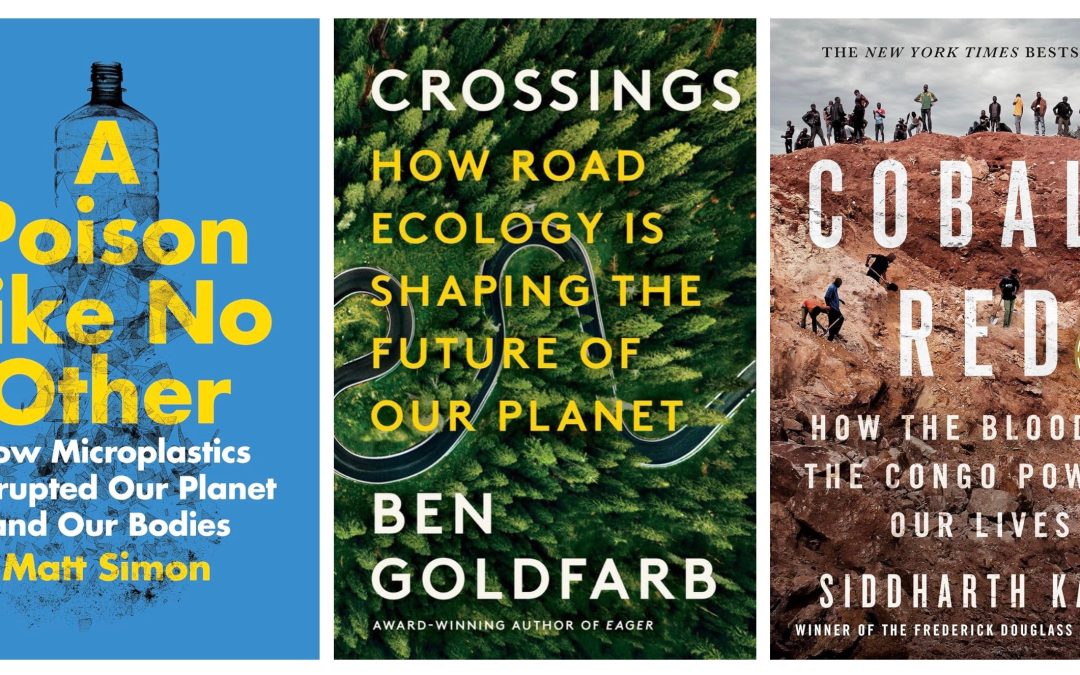
by DGR News Service | Aug 6, 2024 | ANALYSIS, Human Supremacy, The Problem: Civilization
ELISABETH ROBSON
JUL 03, 2024
How a lack of imagination perpetuates this ecocidal way of life
I’ve recently read three books, all of which I’m glad I read, and all of which have the same fatal flaw: they are all constructed around a faulty premise.
A Poison Like No Other: How Microplastics Corrupted Our Planet and Our Bodies by Matt Simon is a book about the absolutely catastrophic impacts of plastic. The book describes how micro- and nanoplastics are everywhere: they are in the air we breathe, in the water we drink, the food we eat, the soil, our bodies (brains, blood, lungs, placentas, fetuses, testicles; everywhere we’ve researchers have looked, they’ve found plastic), and the bodies of every living being on the planet including plants. These microplastics are leaking CO2, contributing to climate change; leaking toxics, poisoning us and all living beings who ingest these plastics; clogging our veins, our lungs, our brains.
The book’s fatal flaw? That we “need” plastic in order to maintain this ecocidal way of life, and so we must mitigate for the harms of plastic rather than eliminate plastic entirely.
Crossings: How Road Ecology Is Shaping the Future of Our Planet by Ben Goldfarb is a book about the absolutely catastrophic impacts of roads. The book describes the mass killing (murder?) of wildlife and humans the world’s 40 million miles of roads perpetrate on a daily basis; the habitat fragmentation, the pollution, the noise, the isolation that roads cause, no matter what is driven on them. It is an entire book about the nightmare that is roads for all living beings on the planet.
Its fatal flaw? That we “need” roads in order to maintain this ecocidal way of life, and so we must mitigate for the harms of roads rather than eliminate roads entirely.
Cobalt Red: How the Blood of the Congo Powers Our Lives by Siddharth Kara is a book about the absolutely catastrophic impacts of mining, primarily cobalt but also copper, in the Democratic Republic of the Congo (DRC). The book describes in devastating detail the destitution of the lives destroyed by cobalt mining; the drudgery, slavery, pollution, health impacts, environmental ruination; the horrors that one can barely believe but are real, all to supply materials for our tech gadgets and electric vehicles.
Its fatal flaw? That we “need” this technology in order to maintain this ecocidal way of life, and so we must mitigate for the harms caused by mining rather than eliminate mining entirely.
In each case, the author has written a book describing why plastic, roads, and mining are untenable for a future of life on planet Earth. In each case, the author excuses and rationalizes the very thing he’s just written an entire book explaining why they cannot be excused; cannot be rationalized. It is truly astonishing.
Plastic
In A Poison Like No Other, Simon writes:
“Plastics aren’t going anywhere—they’re just too useful and too omnipresent. And even if a virus killed every human next week, our plastic would still decay and flush out to sea and take to the air, until one day a long time from now it will all have decomposed as far as it can go, wrapping the planet in a perpetual nanoplastic haze. But there are ways to at least thin that haze by slowing the emission of plastics of all sizes.”
In one paragraph, Simon manages to explain why any new plastic added to the plastic already in the environment is a disaster, and simultaneously suggest that we can somehow reduce the impacts by “slowing the emission” of plastics.
No. All new plastic added to the existing plastic in the world will add to the haze. Slowing the emission of plastics is better than not slowing it, but Simon’s book lays out a compelling case for why we need to entirely eliminate plastic and then he concludes that we should slow emissions of plastic, thus compounding the plastic pollution, just a bit more slowly.
This is like the people who think that by slowing CO2 emissions we can mitigate climate change. No. CO2 emissions are cumulative, like plastic in the environment is cumulative. Anything but zero emissions makes the problem worse. Slow is better than fast, but zero is the only acceptable answer to “How much plastic should we continue to make?” just like zero is the only acceptable answer to “How much CO2 is acceptable to emit from burning fossil fuels and destroying the land?”
Zero.
Simon notes that “in the grand scheme of human existence, it wasn’t that long ago that we got along just fine without plastic.” He’s so close to seeing that we could exist without plastic again! And then he ruins it by saying “There’s a path in which we rein in single-use packaging, fix the busted economics of recycling, and get a microfiber filter in every washing machine.”
Reining in single-use plastics? Get a microfiber filter on every washing machine? Sure, that’s better than nothing, but will do little in the big scheme of things. Recycling, we now know, is a farce: it is down-cycling, not recycling, and it essentially turns macroplastic into micro- and nanoplastic at incredible rates. New research shows recycling may actually be the number one source of microplastic, greater even than clothes and tires which were the number one and two sources when Simon wrote his book.
Using less plastic would be great. And the only conclusion a sane person can draw after reading Simon’s book is that zero plastic is what we should be aiming for. Anything more is not acceptable.
Roads
In Crossings, Goldfarb writes:
“‘A thing is right,’ Aldo Leopold famously wrote in his call for a land ethic, ‘when it tends to preserve the integrity, stability, and beauty of the biotic community.’ By that standard roads are the wrongest things imaginable, agents of chaos that shatter biotic integrity wherever they intrude.”
Like Simon, Goldfarb is so close to seeing that roads are so wrong that we should and could eliminate them. The future will be small, local and low-tech. It has to be, because large, global and high-tech have pushed us into catastrophic ecological overshoot, are entirely dependent on fossil fuels, and are destroying the biosphere. That way of life cannot last. So the roads we’ve built as part of a large, global and high-tech way of life will soon become mostly useless.
There are 40 million miles of roads on Earth today, and as Goldfarb writes, “More than twenty-five million miles of new road lanes will be built worldwide by 2050, many through the world’s remaining intact habitats, a concrete wave that the ecologist Willam Laurence has described as an ‘infrastructure tsunami.’”
The existing roads are a catastrophe; building more roads will only compound that catastrophe.
The author writes:
“The allure of the car is so strong that it has persuaded Americans to treat forty thousand human lives as expendable each year; what chance does wildlife have?”
“A half-century ago, just 3 percent of land-dwelling mammals met their end on a road; by 2017 the toll had quadrupled. It has never been more dangerous to set paw, hoof, or scaly belly on the highway.”
“More birds die on American roads every week than were slain by the Deepwater Horizon oil spill.”
How can someone write these words and conclude anything but that roads must be eliminated? And yet, somehow Goldfarb then writes that we need a “road ethic”, and waxes lyrical about a tiny number of wildlife over- and underpasses existing and planned that, yes, are better than doing nothing, but will do very little to stop the slaughter of living beings on roads, and absolutely nothing to stop the 25 million new miles of roads planned through some of the world’s last remaining intact habitats.
Cars are terrible for the environment, no matter what powers them. The roads they are driven on are terrible for the environment. Goldfarb’s book makes this crystal clear. How does he not conclude that we need to eliminate roads? It’s so obvious we must. I find this astonishing, given that it is the environment that keeps us all alive.
Humans have been driving cars for only about 135 years. Obviously we drove horse- and donkey-pulled carts on roads for millennia before cars were invented; there were far fewer roads, the roads that existed were dirt tracks rather that fossil fueled-concrete and asphalt, and those roads had far fewer impacts, just like carts have far less impact than cars. Perhaps most important, human population was far, far lower so the overall impact of the roads that existed before industrial civilization was correspondingly lower.
The only conclusion a sane person can draw after reading Goldfarb’s book is that zero new roads and dismantling existing roads is what we should be aiming for, along with a phase-out of cars and trucks. Anything else is unacceptable.
Cobalt
In Cobalt Red, Kara writes:
“Since about one-fourth of CO2 emissions are created by vehicles with internal combustion engines, the expansion of battery-powered transportation provides the only solution.”
Not only is this false, it displays a stunning lack of imagination on the part of Kara.
Again: humans have been driving cars for only about 135 years, out of our 300,000 year existence on Earth. We’ve had cobalt-containing lithium-ion batteries for only about 40 years. This ecocidal way of life is so alluring, so pervasive, so addicting that we—and Kara, specifically—simply cannot see out of the prison it is holding us in.
If we cannot even imagine a life without cars, without batteries, without technology, then we have absolutely no hope of stopping or even slowing the destruction of our only home.
Cobalt Red is primarily about the desperation of artisanal miners, adults and children, in DRC. It describes an industry that treats people as cogs in a machine and throws them away casually:
“Imagine if a mining company came to the place where you live and they kick you out. They destroy all your belongings except whatever you can carry in your own hands. Then they build a mine because there are minerals in the ground, and they keep you out with soldiers. What can you do if there is no one to help you?
‘They kicked us from our homes!’ an elderly man with patchy skin, Samy, exclaimed. ‘We lived on that land for three generations before the mining companies came. We grew vegetables and caught fish. They threw us out and now we cannot find enough food to find our families.’”
It is secondarily about the devastating environmental impacts of mining. These impacts occur whether it is men in machines or children with pickaxes and rocks in their hands doing the mining. The end result is the same: land, air, water, and natural and human communities destroyed:
“A thick cloud of fumes, grit, and ash suffocates the land. Sky and earth meet vaguely above the hills at some obscure and unattainable frontier. Villages along the road are coated with airborne debris. Children scamper between huts like balls of dust. There are no flowers to be found. No birds in the sky. No placid streams. No pleasant breezes. The ornaments of nature are gone. All color seems pale and unformed. Only the fragments of life remain. This is Lualaba Province, where cobalt is king.”
Mining for the materials to make everything from our gadgets to our cars; materials to build roads, to make plastic; materials to create the things we all take for granted every single day, is destroying the planet. The author notes:
“We would not send the children of Cupertino to scrounge for cobalt in toxic pits, so why is it permissible to send the children of the Congo?”
Here in the U.S. with our environmental laws, we don’t allow children to work in mines. But we do allow men driving massive mining machines to destroy the land that the families of nearby children have foraged on for generations; to create air pollution that nearby children will breathe; to stack or dam toxic tailings, contaminating the soil and water for eons, soil and water the children need to survive and grow up healthy.
We allow mining companies to “take” golden eagles and pygmy rabbits and other endangered and threatened species; to destroy the homes of wild beings who are just trying to raise their own children on land that holds the same materials the children in the Congo mine with their bare hands.
Kara concludes that “If major technology companies, EV manufacturers, and mining companies acknowledged that artisanal miners were an integral part of their cobalt supply chains and treated them with equal humanity as any other employee, most everything that needs to be done to resolve the calamities currently afflicting artisanal mining would be done.”
Yes, helping the artisanal miners would be better than nothing. Stopping the child trafficking, the sexual assaults, the sickness, the injuries, the penury, and the deaths is critically important. But that won’t stop the mining; that won’t stop the pollution and environmental devastation that mining causes.
The only conclusion a sane person can draw after reading Kara’s book is that zero artisanal mining is what we should be aiming for. An especially perceptive person reading his book will conclude that zero mining should be the real goal. Anything else really is unacceptable.
Connections
The faulty premise behind all three of these books is that this ecocidal way of life can and should continue. This is false. It can’t, it shouldn’t; ultimately, of course, it won’t.
Not only are these books connected by the stunning lack of understanding by their authors of the implications of their own work; they are also connected in that they describe just three of the many devastating implications of modern life. One can imagine a thousand books just like these, about every aspect of modern life we take for granted.
All three of these books are well-worth reading if you, dear reader, want to know the truth about what this ecocidal way of life is doing to us, to the natural world, to other people, and to the planet as a whole. Each of these books is absolutely devastating to read, if you truly take in what they are saying and deeply understand what we have done, and what we are doing, right now. The perversion of all that is good in the world in service to industry and consumption will wreck you to your core, if you let it—and I implore you to let it.
Why? Because only if we truly understand the implications of the horrors these books describe will we be able to make change. Real change. Not the half measures, the compromises, the ineffectual so-called “solutions” suggested by the authors of these books, but major, life-altering change that is what we need to stop the slaughter of the planet.
I will leave you with this last quote from Cobalt Red that says pretty much everything I’ve been trying to say in this essay:
“A lone girl stood atop a dome of dirt, hands on her hips, eyes cast long across the barren land where giant trees once ruled. Her gold-and-indigo sarong fluttered wildly in the wind as she surveyed the ruin of people and earth. Beyond the horizon, beyond all reason and morality, people from another world awoke and checked their smartphones. None of the artisanal miners I met in Kipushi had ever even seen one.”
Banner: Covers of the books discussed in this essay.
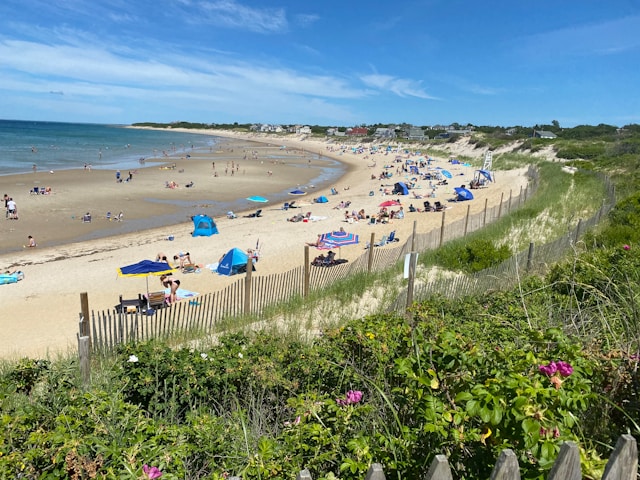
by DGR News Service | Jul 23, 2024 | ACTION, The Problem: Civilization, The Solution: Resistance
By Julia Conley Jun 26, 2024, for Common Dreams.
“The geoengineering approach puts Earth’s systems at risk in a faulty and false bid toward solving the climate crisis. It is what we call a false solution,” said one campaigner.
Biodiversity advocates on Wednesday called on the U.S. Environmental Protection Agency to reject a new geoengineering project spearheaded by researchers in Massachusetts that one critic said would do “nothing to solve the root causes of the climate crisis and instead puts at risk the oceans’ natural capacity to absorb carbon and their role in sustaining life on Earth.”
Friends of the Earth (FOE) and other groups warned that an experiment called LOC-NESS by the Woods Hole Oceanographic Institution (WHOI) carries “potentially catastrophic risks” for the Atlantic Ocean, where researchers have proposed dumping more than 60,000 gallons of sodium hydroxide near Cape Cod to test a “carbon dioxide removal approach” called Ocean Alkalinity Enhancement (OAE).
WHOI’s website states that the experiment would involve the release of “nontoxic, fluorescent Rhodamine WT dye into the ocean from a research ship,” with researchers tracking the dye’s movement over 72 hours in order to determine whether the ocean’s alkalinity could be enhanced.
If so, the scientists say, they could ultimately help to regulate atmospheric carbon.
The EPA’s notice about the proposed study from last month, however, says that the project “would involve a controlled release of a sodium hydroxide solution”—which is “essentially lye, a substance known to cause chemical burns and one that must be handled with great care,” according to Tom Goldtooth, co-founder and member of the board of directors of the national Climate Justice Alliance.
“It’s astonishing that the EPA is even considering allowing dangerous, caustic chemicals to be dumped in ocean waters that are frequented by at least eight endangered species, including right whales and leatherback turtles.”
“Altering the chemical composition of the ocean under the guise of increasing its capacity to absorb carbon dioxide is misleading and dangerous,” said Goldtooth. “An experiment centered on introducing this caustic substance into the sea should not be permitted… The geoengineering approach puts Earth’s systems at risk in a faulty and false bid toward solving the climate crisis. It is what we call a false solution.”
Friends of the Earth pointed out that WHOI’s permit application to the EPA acknowledges that after changing the ocean’s alkalinity, the researchers “have no direct way of measuring how much carbon dioxide will be removed by the experiment.”
“The production of alkaline materials is extremely energy-intensive, releasing similar or even higher levels of greenhouse gasses than they remove upon being dumped into the ocean,” said the group. “The researchers have declined to analyze how much carbon dioxide was released in the production, transportation, and dumping of the sodium hydroxide, making it impossible to know whether the technology even reduces greenhouse gas emissions.”
Despite these lingering questions, said FOE, the EPA has issued tentative approval for a permit for the experiment, with a public comment period open until July 1.
The caustic sodium hydroxide solution the researchers plan to use, warns FOE, “causes chemical burns upon contact with skin or marine animals, setting the stage for potentially extreme damage to local ecosystems.”
Benjamin Day, FOE’s senior campaigner for its Climate and Energy Justice Program, said the group “unequivocally” opposes the LOC-NESS geoengineering experiment in the fragile ecosystem off the coast of Cape Cod.
“It’s astonishing that the EPA is even considering allowing dangerous, caustic chemicals to be dumped in ocean waters that are frequented by at least eight endangered species, including right whales and leatherback turtles,” said Day.
Mary Church, geoengineering campaign manager for the Center for International Environmental Law, said “speculative technologies” like OAE are “a dangerous distraction from the real solutions to the climate crisis,” which scientists around the world agree requires a rapid reduction in planet-heating fossil fuel emissions through a large-scale shift to renewable energy sources.
“Marine geoengineering does nothing to solve the root causes of the climate crisis and instead puts at risk the oceans’ natural capacity to absorb carbon and their role in sustaining life on Earth,” said Church. “Outdoor experiments could not only cause immediate harm to marine life but are also a slippery slope to potentially catastrophic impacts of large-scale deployment.”
United Nations Convention on Biological Diversity has placed a moratorium on geoengineering techniques like OAE until there is “adequate scientific basis on which to justify such activities and appropriate consideration of the associated risks for the environment and biodiversity and associated social, economic, and cultural impacts.”
Photo by Taylor Rooney on Unsplash
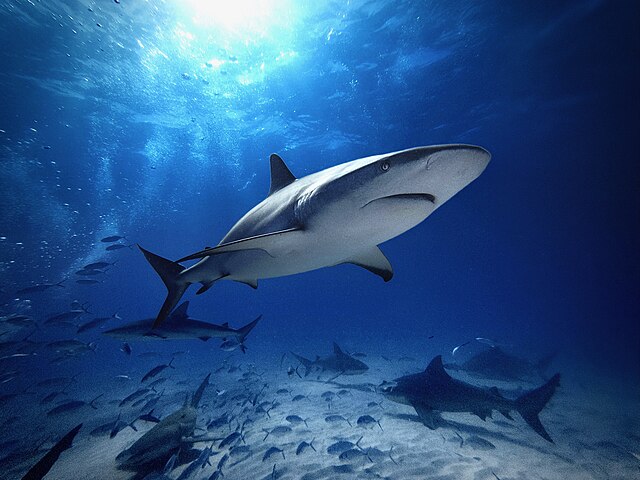
by DGR News Service | Jul 19, 2024 | ANALYSIS, The Problem: Civilization
Editor’s note: Sharks are beautiful, intelligent creatures, but they have been overexploited for decades. Because of their “high market value” industrial fisheries hunt sharks for their fins and other body parts. But it’s difficult to control the protection of the sea predators when they move to unprotected zones or international and local fleets fish in other countries’ fishery zones. The brutal killings of adults, babies, and even pregnant sharks happen while our culture is focused on buying more stuff and attending distracting events.
If sharks went extinct, it would set off a chain reaction. Sharks play an important role in the food chain. Smaller animals like shellfish may go extinct if there were no sharks to eat seals, for example. That would create a ripple effect, causing mass die-offs of otters, seals, and many types of fish due to food scarcity. The chain reaction would continue until its effects were felt on land, with fisheries collapsing in a matter of years. When will humanity wake up and start living with – not against other precious beings?
by: Assaf Levy, BioDB via Pressenza
Shark awareness day
Every year on July 14th, we celebrate Shark Awareness Day. It is not just a tribute to one of nature’s most misunderstood creatures; it is a call to action. Sharks have cruised the oceans for over 450 million years, playing a vital role in keeping marine ecosystems healthy. But today, these apex predators find themselves under increasing pressure, with many species teetering on the brink of extinction.
Sharks: More Than Just Jaws
Hollywood might portray sharks as mindless killing machines, but this couldn’t be further from the truth. Sharks come in a staggering variety of shapes and sizes, from the filter-feeding giants like the whale shark to the sleek and speedy blue shark. They possess incredible senses, like electroreception, that allows them to detect electrical fields emitted by prey, and an amazing ability to navigate vast distances.
As apex predators, they help maintain the balance by regulating the populations of species below them in the food chain. This includes controlling the numbers of mid-level predators and helping to ensure species diversity among smaller fish and invertebrate populations. Their feeding habits help keep marine ecosystems healthy and functional. For instance, by preying on weak or sick individuals, sharks help prevent the spread of disease and ensure a healthier gene pool within the prey population. Their disappearance could have devastating consequences, leading to population explosions of prey species and ultimately, the collapse of entire ecosystems.
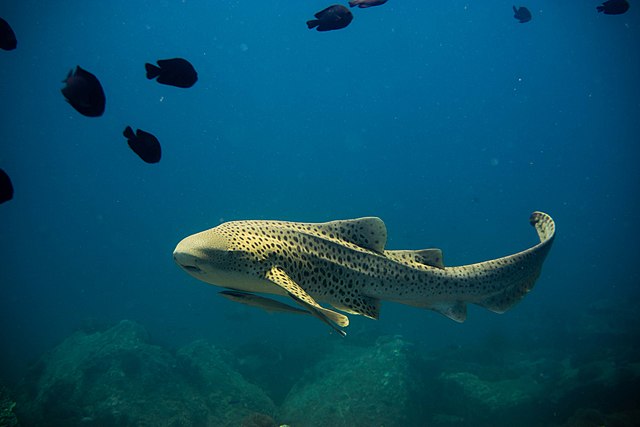
A Cause for Alarm: Why Are Sharks Endangered?
Despite their importance, many shark species are alarmingly close to extinction. According to the International Union for Conservation of Nature (IUCN), over one-third or 30% of shark species are either vulnerable, endangered or critically endangered. Some of the most threatened species include the Great Hammerhead, the Oceanic whitetip, and the Basking shark.
The main culprit behind this is overfishing. Driven by demand for shark fins (a prized ingredient in shark fin soup) and meat, millions of sharks are caught every year, often through unsustainable practices like finning, where fins are removed and the body discarded.
Another major threat is habitat loss. Sharks rely on healthy coral reefs and mangroves for breeding and feeding. However, these vital ecosystems are being degraded by pollution, climate change, and coastal development.
A Ray of Hope: Conservation Efforts Underway
The silver lining in the story of sharks is the growing awareness and effort towards their conservation. Governments, NGOs, and international bodies are working together to protect these magnificent creatures:
- Protected Areas: Many marine protected areas (MPAs) have been established to provide safe havens for sharks where fishing is restricted or banned. One notable example of a Marine Protected Area (MPA) that provides a safe haven for sharks is the Chagos Marine Reserve in the Indian Ocean. This reserve is one of the world’s largest marine protected areas and encompasses a variety of marine environments. It offers significant protection to various shark species, among other marine life, by enforcing strict regulations that limit fishing and other extractive activities.
Another example is the Jardines de la Reina National Park in Cuba, which has been particularly successful in conserving shark populations. This MPA provides a refuge for several species of sharks and has implemented strict no-take policies and eco-tourism guidelines that help maintain the health and biodiversity of its waters.
Deadly Predators
Deadly predators,
Under the sea and on land
But, what’s more deadly?
A razor sharp, swimming shark
Or the end of marine life?
Poem by @saf_begum
- Regulations and Bans on Shark Finning: Shark finning, the brutal practice of removing a shark’s fins and discarding the rest of the body, has prompted global action through stringent regulations and international cooperation. Many countries now enforce laws that require sharks to be landed with fins naturally attached, enhancing sustainable practices and compliance. Furthermore, international agreements like CITES (Convention on International Trade in Endangered Species of Wild Fauna and Flora) play a critical role in regulating the trade of endangered shark species to ensure their survival. These efforts are crucial in curbing unsustainable exploitation, promoting marine conservation, and supporting the recovery of shark populations worldwide.
- Sustainable Fishing Practices: Minimizing bycatch, the accidental capture of non-target species in fisheries, is crucial for preserving marine biodiversity, including sharks. Sustainable practices such as gear modification, implementing time and area closures, and employing bycatch reduction devices can significantly reduce unintended catches. Regulations that require fisheries to use circle hooks and turtle excluder devices (TEDs) help prevent the capture of non-target species like sharks and turtles. Additionally, real-time management of fisheries based on immediate data and promoting consumer awareness through eco-labeling, as mandated by organizations like the Marine Stewardship Council (MSC), can drive demand towards sustainably harvested seafood. These strategies not only help conserve marine species but also enhance the overall health of marine ecosystems and support the economic stability of fishing-dependent communities.
This Shark Awareness Day, let’s not only admire the majestic Great Whites and the elusive deep-sea dwellers but also ignite a global commitment to safeguard their future. Every shark species plays a pivotal role in marine ecosystems, balancing marine life and ensuring the health of our oceans.
Today, we must transcend admiration and take decisive action. Let’s pledge to protect these magnificent creatures, understanding that saving sharks is fundamentally about preserving the entire marine ecosystem. By protecting sharks, we are not just saving individual species; we are investing in the health and sustainability of our entire ocean. Join us in this crucial mission—educate, advocate, and participate. Together, we can turn the tide for sharks and secure a vibrant future for our blue planet.
Title photo by Dennis Hipp (Zepto) via WikimediaCommons CC 1.0 universal
Zebra shark photo by Daniel Sasse via WikimediaCommons CC BY-SA 4.0
BioDB
BioDB is a new, non-profit website that serves as a dynamic hub for wildlife conservation enthusiasts while advocating for protecting our planet’s invaluable biodiversity. With a primary goal of raising awareness and mobilizing funds for selected non-governmental organizations (NGOs) dedicated to wildlife conservation, BioDB offers a comprehensive platform for individuals and organizations passionate about positively impacting our natural world. https://biodb.com/







